Calculator Types Calculator blog
Calculator blog
Musings and comments about our common interest
Calculators and the MoMA in New York
Last week I went with my family to New York, and we spent quite a lot of time in museums. I was really impressed by the Metropolitan - for me, miles better than even the Louvre or Prado in Madrid or Paris respectively (leaving aside for a while the Louvre building). But I guess that this is of no interest for a reader of this blog.
What might be of interest is visit to another interesting museum: the MoMA, as well in New York. Among masterpieces of modern art, there was a row of calculators:

It seems that the curator has a bent for Italian design, more specifically for Mario Bellini and the different models of the Divisumma series. This is not Datamath or HPmuseum.net, guys!
Here are the examples above one by one:
The first is an Olivetti 19. If you ask me, I have seen nicer models...
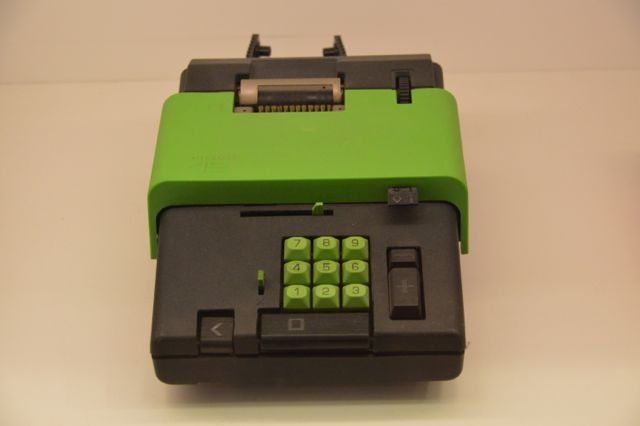
The one below says Underwood 280 - a printing model:
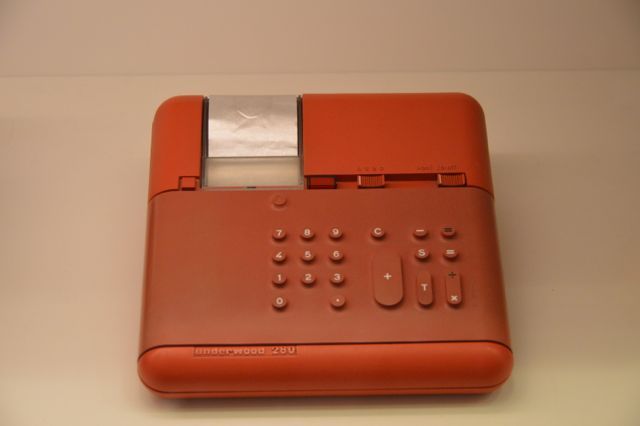
This is the Olivetti Divisumma 18, by Maario Bellini. Observe the seamless rubber keyboard - neat!

And here is the Olivetti Divisumma 28, as well by Mario Bellini, as well with a rubber seamless keyboard.
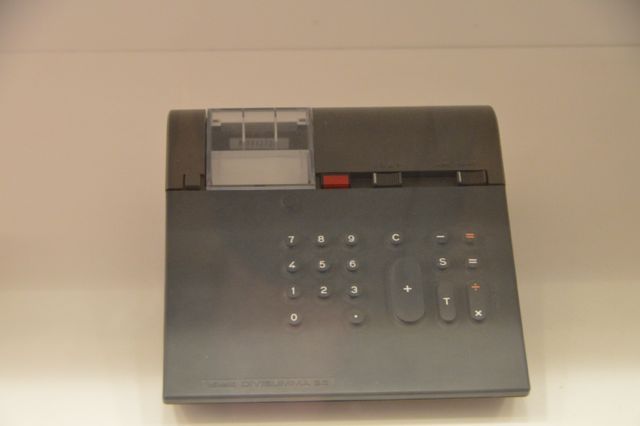
Notice anything particular about the above calculators? There is no screen! They were just printing machine.
Googling these models comes a little more information about them. They were produced around 1973 (when HP knew already how to produce an HP35!), and they are considered design icons. It is said that the 18 model is exceedingly difficult to find.
Additional investigation shwos that there are more units belonging to MoMA, just no on display. Here are some more pictures:
A Sinclair:
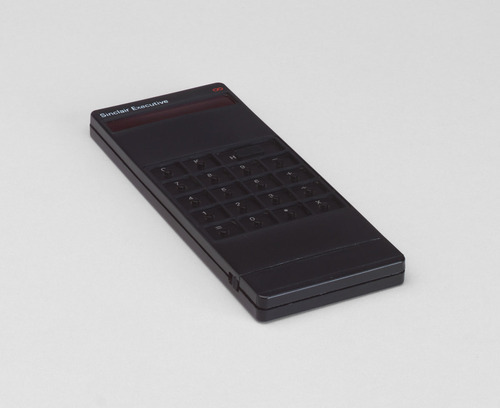
Paulus Van Leeuwen
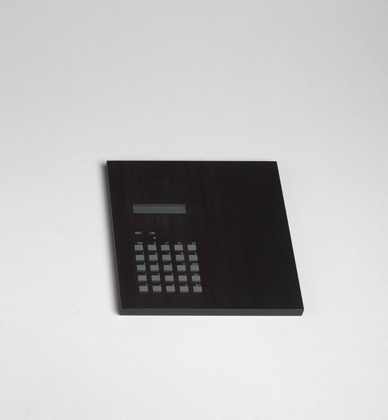
A Braun, designed by Dietrich Lubs:
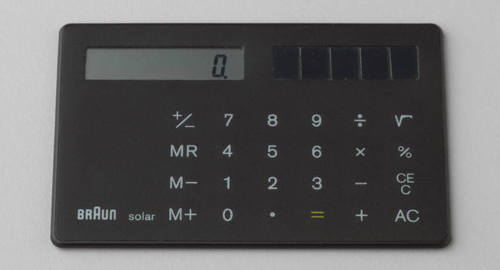
Another Braun, designed by none other than Dieter Rams (who designed a lot of Braun products, from appliances to loudspeakers. Sometime I will write on the Braun LE1, a Rams-ized version of the Quad ESL-57 and that is very sought after. Probably one of the finest speakers ever made)
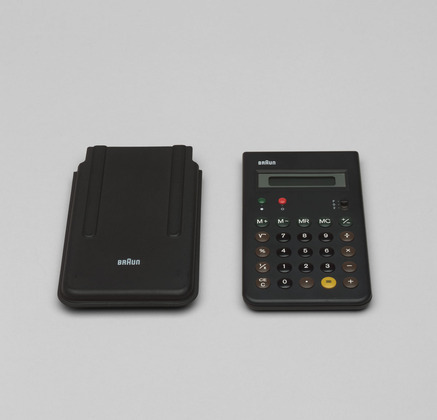
Older Olivettis:
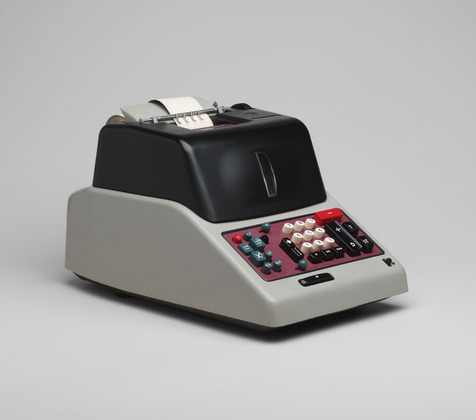
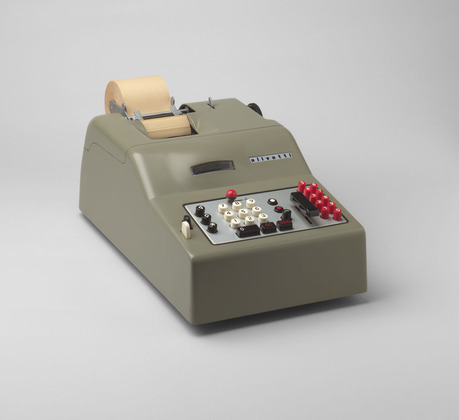
Newer Olivettis (Logos series - I have seen quite a lot of one of them in my life):
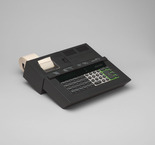
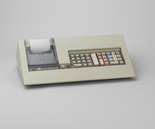 ....and lets stop here.
....and lets stop here.
Frankly, I think that the HP12c or 15c would have a place here. Probably as well some of the 22-25 calculators as well, and the 45, 55 and 80.
I do not like any HP in green colour - from the 67 to the 48gx. The 48SX should belong as well to MoMA.
The HP48SX
I have now besides me a mint unit. No box, slightly used pouch, but absolutely mint body, screen and keyboard. As you can imagine, I have a quite good supply of HP calculators, and I have to say that the initial models of the HP48 family were probably the most beautiful, highest quality calculators HP ever did. Later green-based models were not as beautiful for my taste (plain ugly, I would say), and keyboard quality would be worse in some later models (I would say the latest G/GX versions, not the prior ones)
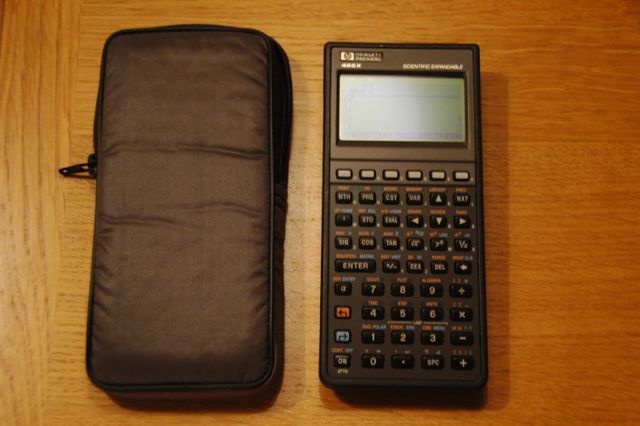
I don't know why HP departed from the brown color of this 48SX. The orange, white and blue colors of the additional key functions are very readable (less so the blue than the others, but still very much), and the matt tone of the background makes a pleasure to work with this calculator on the heave light of many offices or classes.
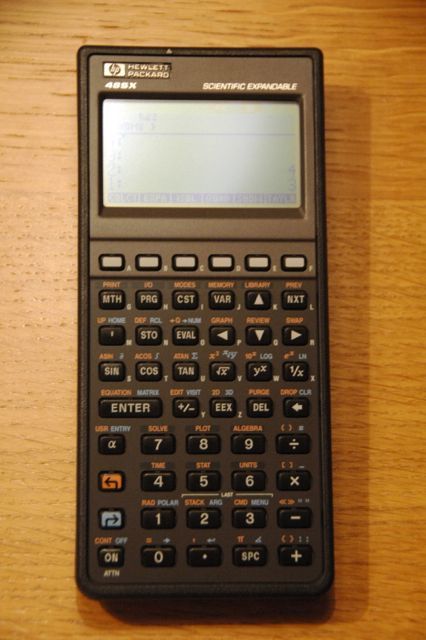
The only bad point compared with what HP is capable is the screen. The blue color LDC is much more difficult to read than the current LDC screens of the HP50g or the newest HP39GII. Now it seems uncomfortable - but I have the same sensation when I start working again with the acknowledged top of RPN calculators - the mighty HP42s. Contrast in that screen is minimal, when compared with the newer HP17bII or the old HP15c. Nevertheless it remains the calculator of choice for many things, since it fits perfectly in the jacket pocket.
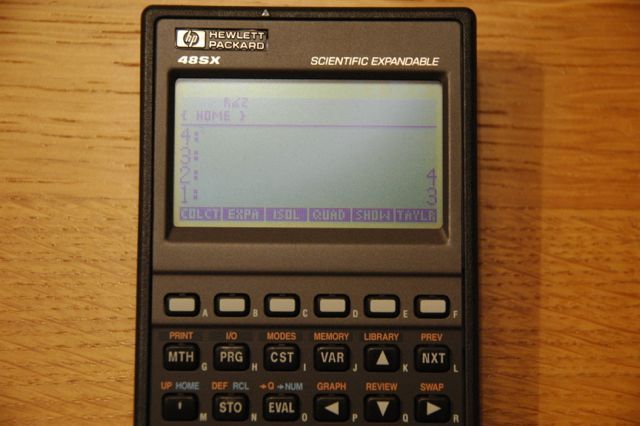
The keyboard in the HP48SX has the same feel of the Pioneer family. It is one of the best HP has produced, but still after the HP41c family, which for many were the best keyboards HP produced. (While it may seem blasphemy, I think that the keyboard feel of the current silver HP17bII+ is excellent, and it is my every day office calculator. As it is thicker both in body and in its pouch than the Pioneer series, it does not fit comfortably in a jacket pocket - I carry there a new HP15c LE)
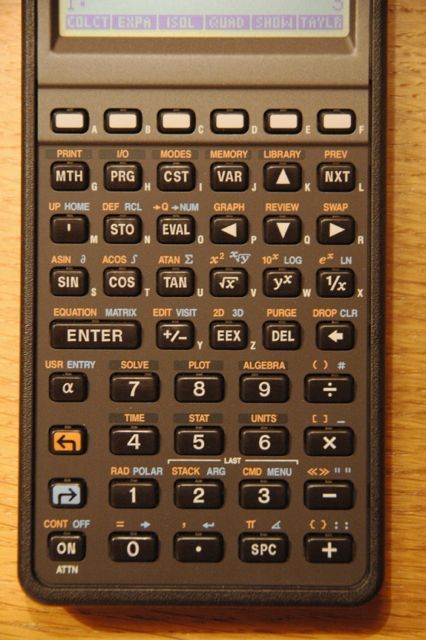
I see that today I am diverting too much from the original aim of today's blog: the HP48SX. Coming back to what I was elaborating: The keyboard visibility is higher than today's graphical models, with the exception of the HP50g Blue; the keyboard organization seems better to me; the color scheme is unsurpassed to date, in the HP48 series or in any other series, for that matter, save for the voyager series; and the keyboard feel remains among the best.
It is just that it does not make sense to me to get accustomed to a 20-years old system that has been superseded by more modern and complete models like the HP50g. If it was instead RPN, I could live with that; I have hard time to make more than very basic programs in RPL; my mind is wired in either basic-like languages or RPN; but RPL, despite being very close to RPN, is substantially more complex to follow than RPN. YMMV, of course.
Please take a look to the article of Mr. Wickes, one of the creators of the RPL concept. It is in the HP journal of June, 1991. You can find it in the url below:
http://www.hpl.hp.com/hpjournal/pdfs/IssuePDFs/1991-06.pdf
(By the way, there are many articles worth looking at in this journal series. It is a testimony of the HP quality of that time, that resources were allocated to create interesting, well documented and produced company newspapers like that.
To find a list of articles in the series, in order to look for a particular subject, go to this link:
http://www.hpl.hp.com/hpjournal/pdfs/HPJ_catalog.xls
All the Journals were digitized from 2006 onwards)
Astronomy for HP Calculators
Astronomy calculations in RPN/RPL
Recently my son was given a telescope as a gift. It was a beginners' refractor telescope, but at least it had an equatorial mount. I knew that the mod difficult would be to find objects to see. Maps of the sky cover the main constellations (which are static in the sky), but not the planets that are moving all the time. So I set to find some astronomical programs to see what could help us.
At the same time, my son started to look for apps on the IPad that could help as well. I must say that he was much more successful than I. Even with the restriction of free apps, he was able to find a couple of tools to set up a tellscope and find stars.
The first is a tool to set up the telescope. It is called Scope Help, and it assists you in leveling the tripod and orienting the axis to North. It also has a night "red" mode. It also allows you to set the angles to aim for the North pole, based on your actual location and height. I need to explore more in depth, since I am not an astronomy expert in any way. I am here just learning together with my son!
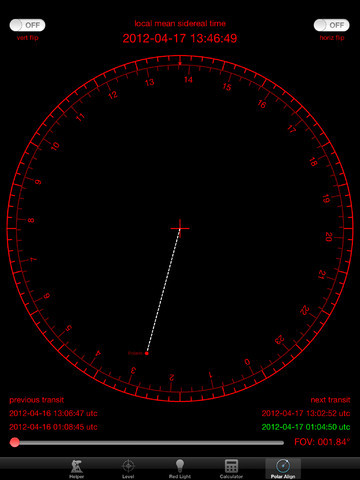
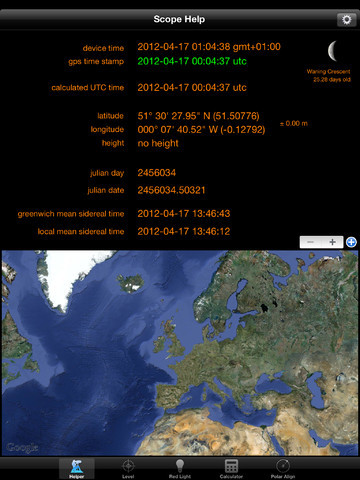
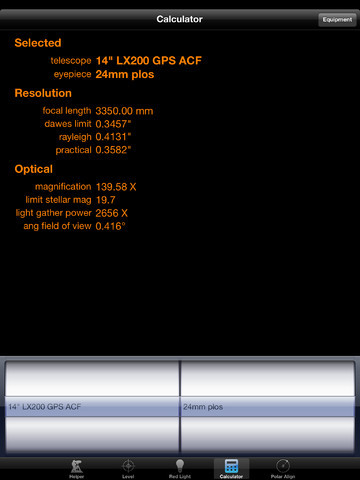
But the real eye-opener is the dynamic sky map. I have learned that there are several available - this is just one of them, and even not the most famous, but at our current knowledge level, it is much more than needed, and enough to keep us occupied for many nights. It is called goskywatchp , and it basically is a map of the sky of where you are currently aiming it. Let me explain it better.
Imagine a screen that uncovers things hidden where you aim it. You just hold your iPad, aim it to the sky area you want, and you see a map of the sky of that area. If you move it slightly, the map moves with you. If you aim the central cursor to a point in the map, the app shows what this object is, and in the case of planets, it shows a picture of it.
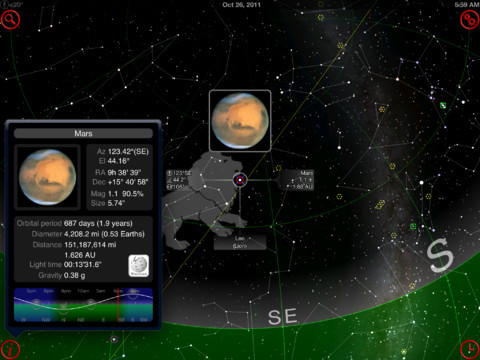
The screen shows as well the ecliptic line, which is (I have learned) the projection of the plane where the planets of the solar system lie. It looks as a line since the earth is as well a part of the plane (in a way, we are seeing the plane from within) You need to look to that line to find the planets. (I am very sorry if my inaccurate descriptions are driving mad the astronomy experts among you, but, as I repeat, I am learning)
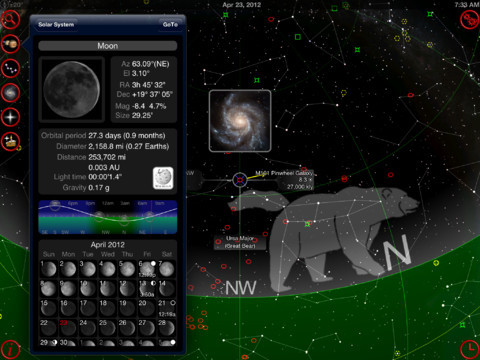
One amazing thing is that the iPad application does not stop in the horizon line: you can continue down and "see" what you will need many hours to see appearing on the horizon: the planets in the other side of the earth, and even the stars that can only be seen in the Southern hemisphere.
Once seen this iPad application, what is the point of using RPN/RPL software for astronomical purposes? I really see here the advances that we have made over the last years. The amount of calculations required to 1st, calculate an accurate sky map for a given day and time and location, and 2nd, make it rotate according to the fast movements of a gyroscope in a consumer product like the iPad, is mind-boggling.
But anyway, I promised it and here is what I found:
Programs for HP 41c family
- Phases of the Moon
- Gravitational n-body Problem
- Transformation of Coordinates and Precession
- Astronomical Ephemeris
- Terrestrial Geodesic Distance
- Local Solar Time
- Satellites of Jupiter
- Saturnian Satellites
- Tides
- More Accurate Tides
- Rising-Transit-Setting
- Binary Stars
- Calculating a Fix
- Nutation - Obliquity of the Ecliptic - Sidereal Time
- Astronomical Refraction
Scientific Calc's Collector's Pack
Scientific Calcs Collector’s Pack
In a previous blog page, I told you that many of our customers are calculator collectors as well. Many of them will not stop until completing their collection. And some of them have just decided to start theirs. These packs are for them.
Although HP calculators started by scientific models, they soon completed the line with financial models, distinguished by the Time Value of Money algorithm. Over time, HP has mastered this market, while during the 90’s they lost the scientific market to Texas and others. Since HP is so strong in financial calcs, we started these packs by the financials. You can see them here.
Now is the turn for the scientific. We have assembled the HP standard scientific models, and we have added as well the brand new kid in the block: the wp 34s, based on HP30b hardware.
The units included in this pack are:
- HP10s
- Smartcalc 300s
- HP30s
- HP35s
- HP15c
- WP34s with latest firmware
There are a very limited number of units of 15c (150 in total, and HP told us they would not produce any more), and as well we have difficulties to locate HP30s over 70 units. So you need to make up your mind!
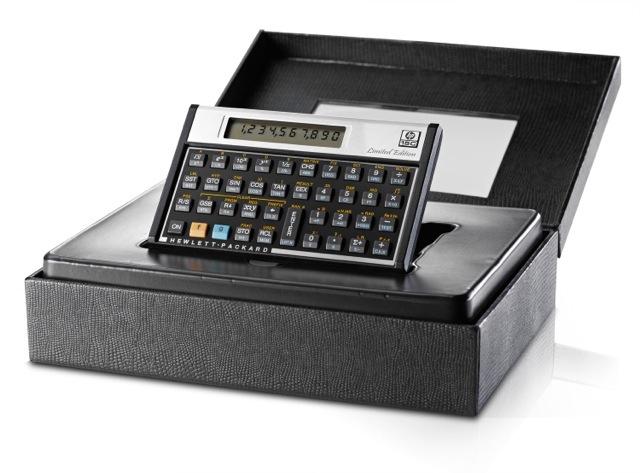
The true HP connoisseur will know that both the 10s, the Smartcalc300s and HP30s have not 100% HP pedigree; they cannot be used in RPN mode. I have a hard time using a non-RPN calculator, so these units will see limited use on my desk; but as a collector, I need to have them all.
If I had enough supply of classic units, I would include them; but as I seldom have more than one or of each (and often one of them belongs to MY collection), I cannot include them in the pack.
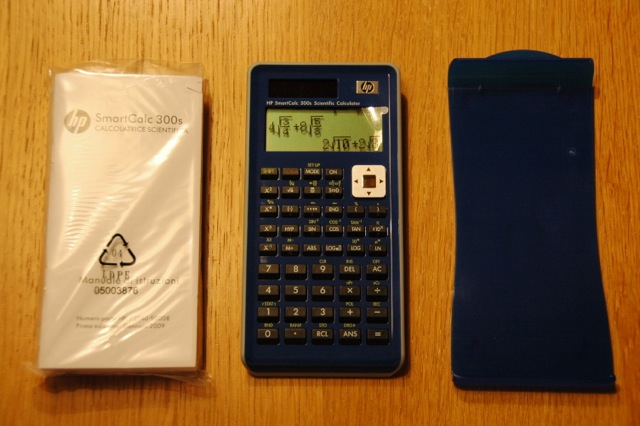
Collector's Pack
As many of our visitors are calculator collectors, we have decided to make their hobby easier, by joining all HP calculators in four groups:
- Financial calculators
- Graphical Calculators
- Scientific Calculators
- Other
We are adding all calculators in each group and reducing their price by 20%. In that way, we increase the size of the sale, and you get a significant discount. In the case of the first of them, the financial pack, you save 97,86 €! (apart from lower shipping costs)
The financial pack is composed of:
HP10bII+
HP12c
HP12c Platinum
HP12c Anniversary
HP20b
HP30b
HP17bII
In later days we will complete the offer with the other bundles. I hope you like it!
Yet another Easter egg in the HP50g
There is yet another Easter Egg in the HP50g. Apparently, the one shown in the previous blog page is the latest, appearing only in ROM versions over 1.18. This one apparently appears in all versions, but looks as a more primitive version of the game.
You need to write "HpMad", between inverted commas and within an entry field in any form - even the beep "tick" of the modes menu works. See the screenshot below:
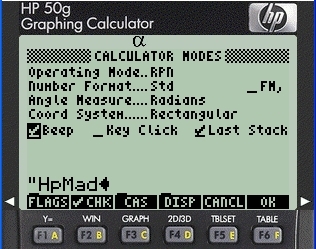
You then will get a tetris screen in landscape format. (if you use the computer emulator, it is exceedingly fast and not fun at all to play with). The pieces are much more elementary, and the aspect is rougher than in the other Easter Egg. I am putting both here for comparison. You'll choose which one to use!
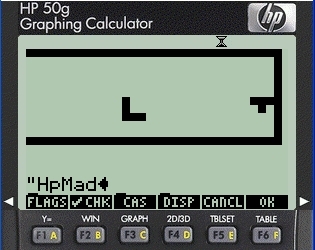
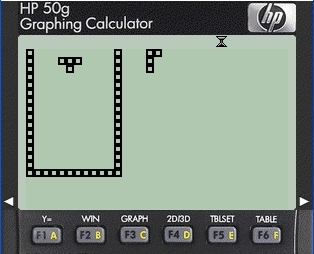
When you finish the game, you will be rewarded with your score in the same command line you abandoned shortly ago:
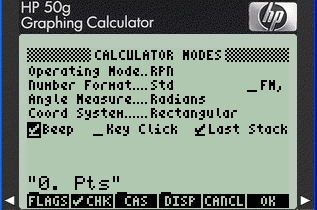
(I told you that the screen was moving too fast for my slow fingers - I was not able to score a single line!)
There is another easter egg in this calculator. This time is a little bit less useful: it just show a puzzle with the names of the developers of the HP49g calculator - at the time it was under Australian Calculator operation (ACO) team. You need to write RULES and press enter, and you will see this acreen:
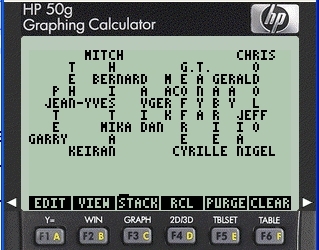
Easter eggs seem to appear with some frequency in mainstream software. In some programmer ambients, you cannot possibly release a significant piece of software without including these.
In a previous blog installment, we incuded a video with a chronometer in an HP45. The Easter eggs in HP calculators seem to have existed since very early in their history!
Googling for HP Calculator Easter Eggs will give you 480.000 results. It seems that this is not only existing, but as well interesting enough for many of us! Not only calculators, but also the HP 54600B oscilloscope has a Tetris inside.
In the company I work in, the AS/400 software development is under my responsibility area (although I am not directly related with programming or analysis. We are not a software company, just a AS/400 user with volume enough to do our own developments). I wonder if our developers are playing that kind of games in our much more serious business software...
Tetris in the HP50g
This is one of the times you feel stupid. You think you know quite well what you have, and there comes someone that shows you know nothing.
Today, at work, I was using my HP50g, and a companion said to me: "wow, that's the calculator that comes with Tetris".
"You mean you can load games, do you? of course you can find a lot of games for it", I replied.
"No, I mean that it comes with Tetris in its software", he said.
"I don't think so".
"Try this: open the formula editor (right arrow + EQW), set alpha, and write MINEISBETTER".
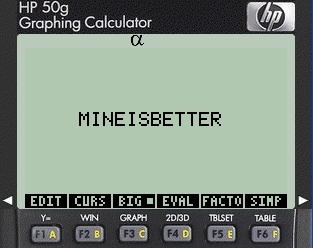
"Now, select it:"
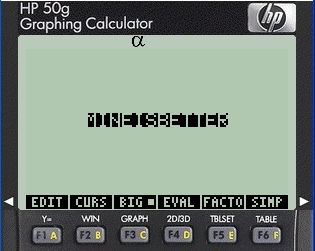
"and now, de-select alpha and press "SIMP" (F6). Voilà!!"

You play it with the keys 2, 4 and 6 for movement across the screen, and 5 to rotate. Backspace to stop it.
Again: all the time in front of my nose, and I did not know!!
New HP15c LE batch arrived
Yesterday I received the last batch of HP15c Limited Edition. The several boxes of 10 units that I have received have packing dates from 12.4.2012 to 13.4.2012 (European date convention!!). All of them have the initial firmware, i.e. 15.4.2011. This means that in this last release, you will see the same couple of quirks that have affected all units so far.

Quality of keyboard seems, if anything, to have improved over my first unit. And now, when talking about "HP15c Limited Edition", you need to know that the unit I took out of the box had a serial number over 23.000 !! You can imagine that the total production might have been 25.000 units - and that's already a significant percentage of what the original 15c was! (We've been told that over 100.000 units were sold during its original production time - probably up to 150.000 if we count all origins). While 25.000 is a small number when compared with the millions of typical smartphone products, it is already a significant number for a premium calculator.
I hope that someone sees that there are tools that are just "good enough", and don't need to be changed every couple of years for the next best thing. The HP15c is one of them, and deserves to be a part of the HP calculator line, not as a Limited Edition but on its own right.
By the way, many think that the HP42s deserves similar position - but its reissue is much more unlikely, given the development means available and the size of the assignment - unless they take the work of significant members of our community to go faster. For now, let's rejoice in our luck and enjoy the HP15c LE. We do not know if we're going to have it for a long time. I will stop sales when I have just 10 left - and that'll be enough for myself and my children.
HP 15c LE last production run.
It was beautiful while it lasted…
Several distributors have confirmed us that the last run of HP 15c has already been distributed, and that HP does not plan to produce more.
While it has been a fantastic premium product, we have to realize that this is a niche product, and, in the grand scheme of things, completely irrelevant for HP. Any of the other products made by HP is produced in quantities 1 or 2 orders of magnitude greater than our beloved HP 15c; some of them, even three orders of magnitude!
I know that some of you saw this coming, and ordered more than one unit. There were some that ordered as many as 10 (I guess that there was some ebay reselling involved) but several ordered 5 units.
Now is the time to take a decision that may last for the rest of your life…Seriously now, while if I were HP I would keep the 15c running for as long as it sells, the production logics for this kind of product implies that it may well be the last time that this model is produced.
I guess that we did not behave well, as a community, with respect to the HP development team regarding this product. As this community has been asking repeatedly for this product, the development team set to produce it, based on an already developed body – the one of the HP 12c; but it seemed to me a labour of love, because the potential market did not deserve any development time or effort for such a small niche.
Once this product had been released, as a gift for us all, there was a lot of criticism on the grounds of supposed low quality. I have and use an American unit of the first batch, and another of the European batch, and both worked flawlessly. Of the more than 500 units sold by us, only three units have been defective. There were criticisms as well about the keyboard, but anyone with experience with the current HP line would attest that it is the best keyboard in production with the sole competition coming from the HP35s and HP17bII. And compared with the original…well, in my 1985 unit, the keys are softer and shiny, but not necessarily better.

The presentation of the product was as well ahead of any other product - either HP's or the competition's (the anniversary 12c had a smaller box and no printed full manual. The only missing item in the HP15c for a completist would have been the Advanced Functions handbook, itself a masterwork in itself.)
As for the bugs…well, there really was only a bug, which had never been a problem for me (since I did not use PSE but R/S in general in my programs).
However, I found so much bad karma on the comments that, if I were a member of the development team, I would know where to put our community demands…
A rare, non HP, ultra-old calculator
I went this weekend to my parent's house. He proudly showed me his latest acquisition, which was at the same time the very first calculator he used (he's now 75 and started working at 16, like many youngster his age). It was an Odhner Original, an Swedish brand that was sold in Spain at that time. He even has the manual in Spanish, and he was able to show me how it was working. Please take a look at it.

This is a pin-wheel calculator. My father showed me how to perform an addition ( a little cumbersome), a multiplication (looks simpler but requires more rotations of the wheel) and setting it back to zero.
Take several more looks a little bit closer:
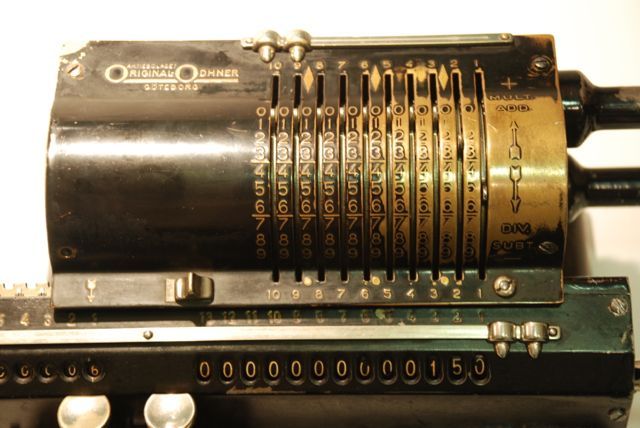
And a little slanted:
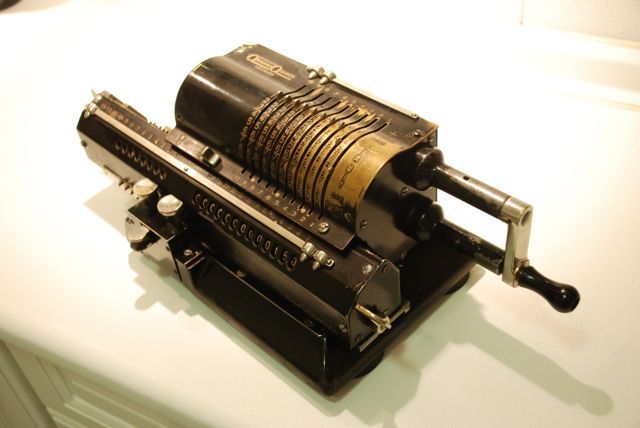
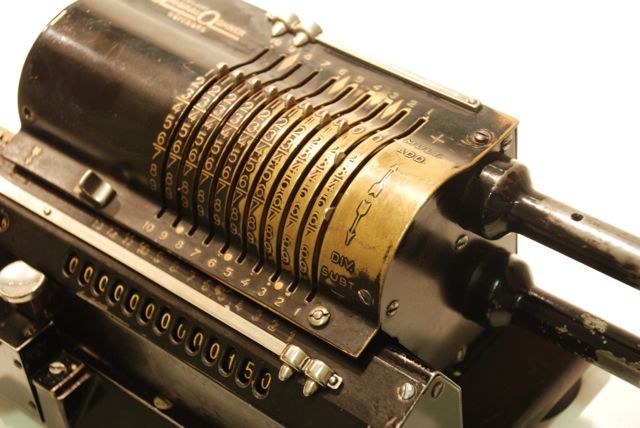
I have the manual and intend to take a look at it. With the many things happening in our lives, I do not plan to spend a lot of time learning it - I need to learn the HP 39gII, in order to set it up for the web, since it will be on sale mid june! There are things much higher in priority right now.



